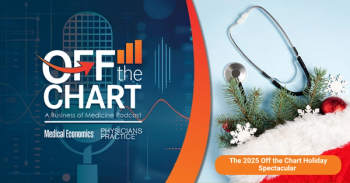
A decade of value-based care: Mark McClellan, M.D., Ph.D.
Key Takeaways
- Value-based care adoption is hindered by administrative burdens and data challenges, despite some progress in alternative payment models.
- Medicare Advantage plans have advanced, but risk adjustment remains linked to fee-for-service claims, complicating the transition.
A discussion with Duke University's Mark McClellan, M.D., Ph.D., about why value-based care hasn’t been adopted more quickly
A decade ago, the federal government launched its large-scale Medicare Access and CHIP Reauthorization Act (
Later this summer, Medical Economics will release the second edition of Medical Economics Insider featuring an in-depth look at how successful MACRA has been and what the future of
Medical Economics spoke with Mark McClellan, M.D., Ph.D., director, Duke-Margolis Institute for Health Policy, and a former administrator at CMS, about why value-based care hasn’t been adopted more quickly.
(Note: The transcript has been edited for brevity and clarity.)
Medical Economics: For years we've been hearing that everybody's moving to value-based care, but fee-for-service accounts for the majority of payments. Why hasn't value-based care gained more traction, both on the public and private payer sides?
Mark McClellan: We have seen some organizations succeed and make notable progress and move away from fee for service and into alternative payment models, but it's still maybe approaching an inflection point. If you look at the numbers there are more Medicare beneficiaries and even more Medicare Advantage beneficiaries in physician payment arrangements that are not fee for service, or that at least have some component of value-based care. But most of the payments are still fee-for-service based and underlying all of this is still a fee for service payment system. So those that have moved into alternative payment models are still facing some big administrative burdens. They still have to fill out all the claims and submit all the claims. It has not yet turned out to be a pathway away from all of that paperwork, and there also are some challenges in getting the data and clarity needed in these models. So for many alternative payment models, it takes days to weeks to get data on what kind of utilization your patients are having, what kinds of complications they may be having outside of your physician practice, and it may be months to a year before you actually know how you did against the benchmarks. That makes it really hard to succeed and makes health care organizations very cautious about committing to moving further away from fee for service. Medicare Advantage plans have done more to move away from fee for service and pay more to primary care groups and help support population-based payment models, but the risk adjustment system in Medicare Advantage is still in important ways, tied to fee for service. So how much you get paid for a beneficiary in your MA plan depends on what diagnosis codes are reported and what are essentially fee-for-service claims. So, if you're a provider in MA plan, even if you're being paid on a capitated basis, you still have to submit so-called encounter data to Medicare, which is essentially the MA version of a fee-for-service claim. And you have to get data out of your electronic systems and maybe perform certain tests and things to document the diagnosis codes on these encounters, and that's extra work for physicians. We've got electronic health records widely adopted. We have interoperability standards. It should make it possible to just get the relevant clinical information on a patient's risk that physicians are using in their care systems and not have to go through all of these steps of recreating fee for service in the payment process. That's just a big underlying mismatch that's leading to a higher cost. If you look at the results, we do see good evidence that physicians who are in ACO arrangements and shared savings programs do achieve savings and overall better care in Medicare Advantage. There's some good evidence that peer coordination is better and beneficiaries have more access to prevention-oriented care, but it's also costing more, and we need to do a better job of that, and create one that's much less burdensome for clinicians. I think there's some real opportunities to make progress on that in the near future.
Medical Economics: How do we how do we fix those underlying problems? Is that a government problem? Is it a payer problem?
McClellan: At its core, I think it's a government problem, but it requires working with the health plans in the private sector. It could include things like, look, back when we set up Medicare Advantage, the best data we had on figuring out what a patient's health status and therefore risk and expected costs were was essentially fee-for-service claims. That's no longer true. We have data that could be interoperable, that with effort, physicians are using to create dashboards and for measuring patient risk. This is not something to be done overnight, but something that could be started I think right away with some of the most important chronic disease risks where we don't have a good way of both capturing the risk and capturing what clinicians are doing about it. For example, for chronic kidney disease, about 7 million Medicare beneficiaries have the condition and are undiagnosed and untreated. If there's early intervention, which involves some diet and lifestyle steps and some medications, you can really slow down the progression of kidney disease, but we don't have chronic, early stage kidney disease as a risk adjuster right now. And even though you could easily come up with a measure of progression of kidney disease based on lab tests and urine tests—very reliable measures—that's not part of Medicare's performance measurement system either. And the reason, I think, is that this wasn't feasible to do off of fee-for-service claims easily. I think there's a lot of interest in the private sector and maybe getting to more standard approaches of sharing relevant data on these risks and constructing measures more automatically. We really have to modernize the data and the interoperability that we're using to support physicians to reduce their burdens and to make it easier to help them track how their patients are doing and rewarding them, and supporting them clearly and predictably when they change those risk trajectories. That's not what our payment systems do now.
Medical Economics: What about the smaller, independent physician practices? Can they survive under a value-based care system?
McClellan: I think it's very tough under the current cumbersome reporting requirements. If you're a small practice trying to succeed with some of your beneficiaries in traditional Medicare as an ACO, they have different ways that they have to get data to calculate risk adjustment and stars measures. It's time to do more, to standardize all of that, assisted by AI. But the good underlying data are there now, and should be there in our electronic medical records. We just need to make it easier for clinicians to report on all of this automatically and more consistently based on the data that they really believe is most important for identifying their patients’ risks, and taking clear and effective steps to reduce those risks.
Newsletter
Stay informed and empowered with Medical Economics enewsletter, delivering expert insights, financial strategies, practice management tips and technology trends — tailored for today’s physicians.








